“Play, a child’s most serious work” transforms what we see, touch, feel, hear, taste, and how we design for continuous learning. By integrating the child’s perspective, it is possible to create meaningful environments that encourage children’s sense of wonder while engaging their interest and curiosity . . . even in challenging subjects such as philosophy, history, and mathematics.
Imagine when you were a child. Feel the anticipation and the excitement of playing with your friends. Remember the restless curiosity. Hear the laughs, the little voices, and all the sounds of so many childhood memories. Look around and prepare to discover a million new things, a million new ideas. Let your imagination soar like it did back then. Experience the bright colors of your memories, the happiness of your soul, and the joy of being a child again.
Let’s think.
How do we hold onto these basic principles of natural learning through play?
Let’s talk.
How do we embrace this world full of challenges and convert them into opportunities for experiential learning and creativity?
Let’s do.
Understanding that learning and play are intertwined gives us the freedom and the challenge of creating educational spaces that allow for fluid, flexible, healthy, and resilient experiences.
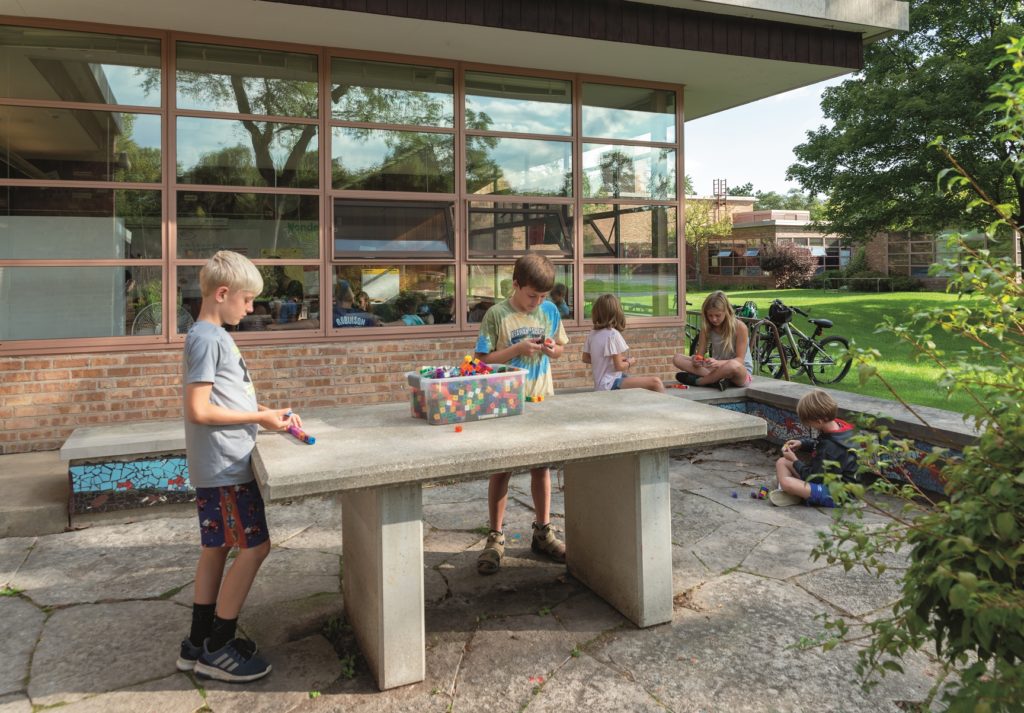
A Child-Centered Design Approach
For decades, epistemologists have invested in “understanding how we arrive at knowledge, whether by scientific inquiry, by reason, or by happenstance.”[1] When it comes to children’s educational experiences, Dr. Maria Montessori’s research and observations of young children and adolescents in classroom environments that fostered children’s natural desire to learn has unequivocally put a spotlight on the fact that “children absorb(ed) knowledge from their surroundings, essentially teaching themselves.”[2] Similarly, Loris Malaguzzi’s research on children’s learning in Reggio Emilia points to the optimal conditions for supporting “their “journey” by building with them and for them a network of understandings that is founded on the continual intertwining of the fields of knowledge and the fields of experience.”[3]
With a historic global pandemic shuttering schools worldwide, we are reminded of these long-standing legacies of how to embed the child’s perspective in designs for learning by embracing their right to play as form of participatory expression. Because change begins in the adult world first, we look to contemporary examples that situate children as protagonists in a common learning process in homelike environments that promote cooperative living and learning.
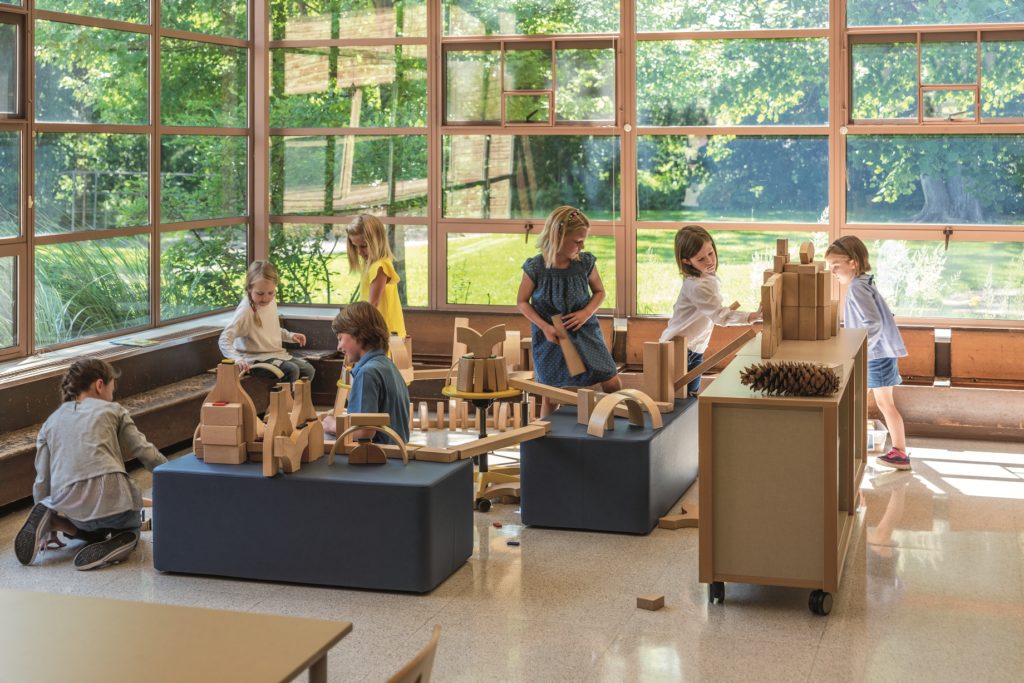
Happiness is Contagious
Giochimparando – OpenMind is a way of learning through games. While playing, children experience emotional self-regulation and reconnect learning with the positive emotions of excitement, fun, and being carefree. Developed in Italy, the project aims to be inclusive in educational processes by integrating children suffering from hardship, language difficulties, and serious illnesses, including foreign children who face even more socio-economic challenges. Through this educational experience of play as children’s meaningful expression, school has become a place to meet friends and feel welcome, a place for well-being and creativity, resulting in fewer children dropping out of school and improved performance on eighth-grade license exams. The Giochimparando – OpenMind project enhances skillsets and raises the “bar of self-esteem.” Children who are challenged by life circumstances learn to believe in themselves. According to the motto “while playing I learn!,” they develop cognitive strategies, exercise working memory, and practice problem-solving by building logical, creative, and critical ideas. Far from being a static teaching method, this educational project reverses traditional “roles” and the children become protagonists in a common learning process: the teacher learns from them, they learn from the teacher. In the sharing of, for better or worse, every single part of the learning process, children move away from the learning objectives of the individual toward the group: not ME, but WE. The method is now supplemented by “Meravigliamo,” a close collaboration with sound artist and inventor Marco Guglielmi Reimmortal, known for his interactive installations of sonic derivation. Using sound as a sensory stimulus, the ‘marvel channel’ project brings art experience into the dimension of children’s learning and opens their minds to new sensory wonders.
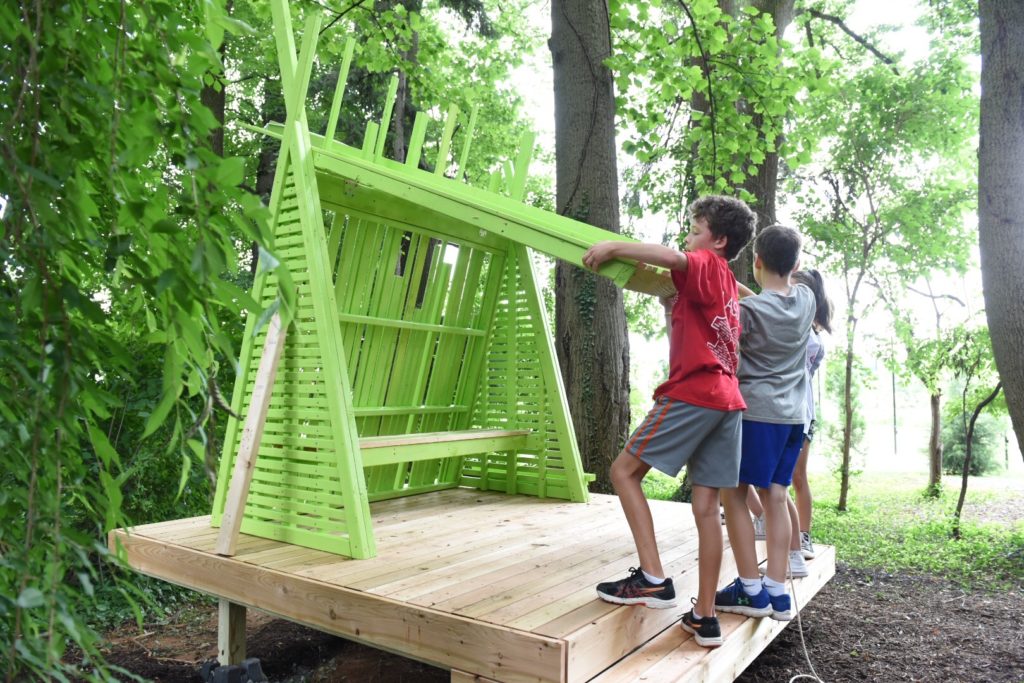
Opportunity Making
The Giochimparando PlayLearn TM method uses play to create an inclusive school, leaving no one behind. With the Covid-19 pandemic, the inclusive method improved distance learning while computers, mobile phones, and tablets became essential for keeping a stable communication and relationship with students. Children used these platforms independently to exchange information, study, play, and work together. Because an alliance between the school and the families is important, everybody “signed” a pact during Covid-19 quarantine; each entity could express their doubts and solutions with the common objective of supporting the children’s growth. Extracurricular activities, like the cinema forum, workouts during online class, and a concert with 180 children from 12 different countries, kept the children engaged and inspired. The concert allowed children to study geography, music, and history, as well as to pursue research for essays and presentations of the experience. They also took pride in being part of Global Children’s Officers (UNESCO) with the Italian Commission of UNESCO, UNICEF, and the RomaTre University. Through these virtual gatherings, children with learning disabilities and special needs improved their performance since they were no longer afraid of the judgment of others. While children were not able to go outside to play during the height of the pandemic, video games became a valuable learning tool for Italian language classes and mathematics.
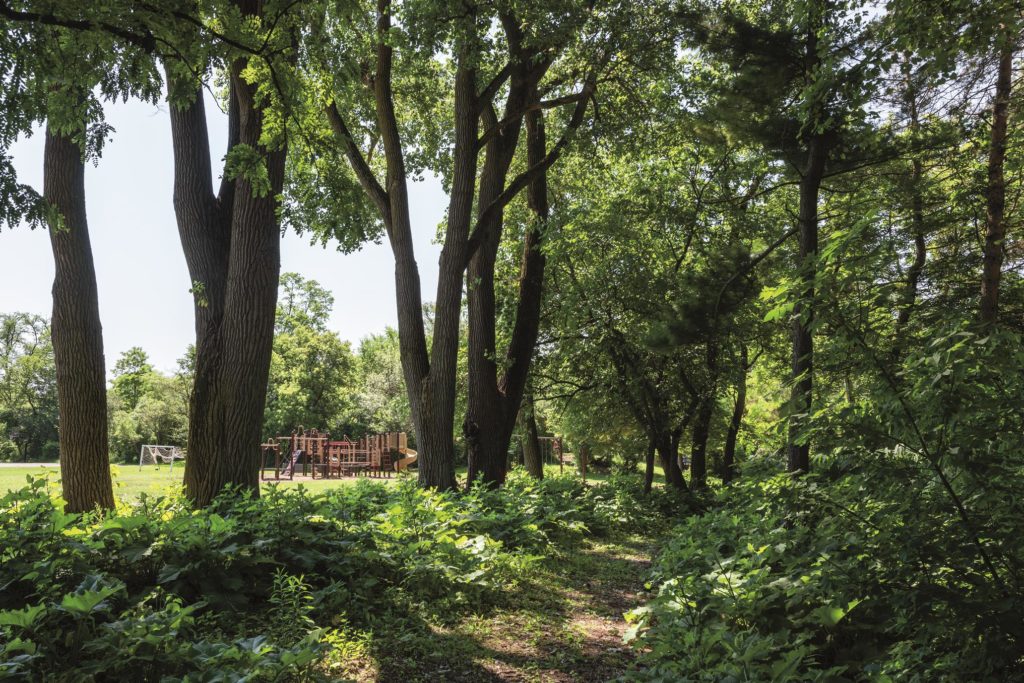
Rain or Shine
Understanding the needs and capacities of children in the learning situation is at the heart of Dr. Maria Montessori’s legacy. She integrated learning outdoors rain or shine for as much of the day as possible.[4] As the Covid-19 pandemic continues to challenge educators in “planning (learning) experiences which include materials to interact with as well as the social setup to engage in,”[5] her legacy has the power to influence how schools pivot to outdoor learning. The data is clear—outdoor learning increases attention span, enhances memory, reduces stress, improves mood, and opens the mind to greater creativity. A 2008 study by University of Michigan psychologists found that walking outside or even just looking at pictures of natural settings improves directed attention and the ability to concentrate on a task.[6]
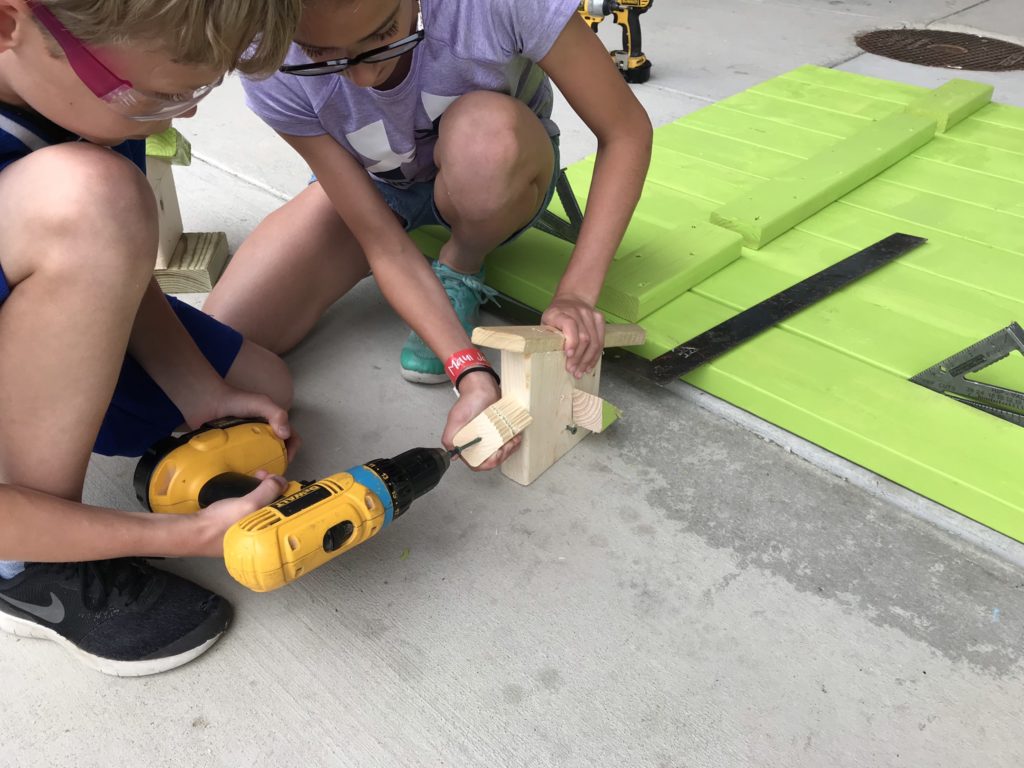
Put another way, nature restores children’s ability to focus. The same study supported previous experiments showing that being in nature improves memory — by 20 percent when it comes to recalling a series of numbers.[7] In The Economics of Biophilia, Terrapin Bright Green documents that the impact of life stress among children was significantly less in children with high levels of nature nearby.[8] Nature supplies social support for children as they interact with others in shared natural spaces. When children become engaged in nature, their neural mechanisms rest and recover. Attentional restoration is critical; without it, children will increasingly respond to distracting stimuli, experience greater loss of focus, and have difficulty managing tasks. In a March 2011 pilot study, psychologists found that students in an Outward Bound course showed a 40 percent boost in frontal lobe activity, which is linked to creativity, after four days in the backcountry. Enhancing daily routines to support the interface of nature and the outdoors strengthens awareness and empathy for others. Through a child’s perspective, nature is full of wonder, is the outdoors offer a place of freedom, and discovery through play is second nature.
Conclusion
Integrating the child’s perspective into “creating educational experiences meaningful for both children and adults, where the children’s ‘wishes, demands, curiosities and hypotheses’ drive the field of knowledge for children”[9] casts a new light on the importance of a child-centered design approach to play. If the Italian physician Dr. Maria Montessori were here today, she would continue to emphasize that children need to experience and exercise all their senses to construct new knowledge. And she would insist that designing a high quality ‘Casa dei Bambini’ [10] [Children’s House] is indeed a powerful approach to intentionally connecting mind, body, and environment for children to delve into their extraordinary learning abilities through play. Dr. Montessori’s legacy encourages designers and educators alike to see the world through the many intelligences of a child. Over the last century, trends and pandemics have come and gone, but what remains at heart is life through the child’s eyes—ever wondrous and full of possibility . . . life as a learning cycle.
The Legat team will be presenting two topics at EDspaces 2020: From Vision to Standards: How Research Informed Furniture Design Selections on Tues. Nov. 10 at 2:30 PM (ET) and Therapeutic Learning Environments: Implications, Applications, Research, and Proof through Practice on Thurs. Nov. 12 at 1:15 PM (ET).
[1] Edelman, Gerald, M.D., PhD. Second nature. Brain science and human knowledge. Yale University Press, 2006. Pg 2.
[2] https://amshq.org/About-Montessori/History-of-Montessori#the-birth-of-a-movement
[3] Feder, Karen. Exploring a Child-Centered Design Approach. From Tools and Methods to Approach and Mindset. PhD Dissertation Defended 2020. Design School Kolding. Pg 118.
[4] Montessori, Maria. From Childhood to Adolescence. Oxford, England: 1994. Print
[5] Feder, Karen. Exploring a Child-Centered Design Approach. From Tools and Methods to Approach and Mindset. PhD Dissertation Defended 2020. Design School Kolding. Pg 100.
[6] Neill, James T. Meta-Analytic Research on the Outcomes of Outdoor Education. Wilderdom.com. University of New Hampshire, Jan. 2011. wilderdom.com/pdf/Neill2002OEMeta analysesCEO.pdf
[7] Top Ten Reasons to Have an Outdoor Classroom. Green Schoolyard Network. 20 Nov. 2011. greenschoolyardnetwork.org/2011/09/25/top-ten-reasons-to-have-an-outdoor-classroom.
[8] Terrapin Bright Green. The Economics of Biophilia; Why Designing with Nature in Mind Makes Financial Sense. Copyright 2012, Terrapin Bright Green LLC.
[9] Feder, Karen. Exploring a Child-Centered Design Approach. From Tools and Methods to Approach and Mindset. PhD Dissertation Defended 2020. Design School Kolding. Pg 118
[10] https://amshq.org/About-Montessori/History-of-Montessori

